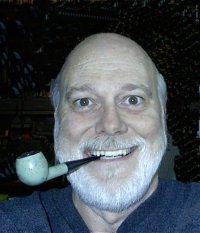I’d like to think that this little reminiscence explains my feelings about the Pledge of Allegiance.
Round about 1958 I was in the seventh grade at
The gashes got quite good, usually a couple of inches long and a half inch wide, filled with the pulpy ichor, and streaming deep red rivulets down from them. Apparently my memory of grade school as being a time of constant scrutiny by the Ursuline nuns is wrong, because it took us at least an hour to come up with these realistic looking, ghastly gashes, which we’d sadly clean off when we got home from school.
I mean it when I say they were very realistic.
Well, one night I was up at Pat O’Harrow’s house, which was a block or so from mine, and we had both adorned our forearms with the best gashes yet. We decided we had to regale someone with them so we left his house and saw that there was some sort of meeting going on at the Pentecostal church right behind Pat’s house. It was an hour or so after sunset and the meeting was in a cinder-block one-story building with casement windows. The inside was brightly lit and there were about 20 young Pentecostals inside and a couple of adults.
Pat and I sneaked up to the building and crawled to directly under the window and peeked inside quickly. Apparently the meeting was just beginning because the group started the Pledge of Allegiance, with all 22 voices strong and stalwart.
“I pledge allegiance to the flag
Of the
At this point Pat and I ducked our heads below the window and extended our left arms up and started scratching our fingernails on the glass. The pledge continued, but with a few voices dropping out.
“And to the republic for which it stands . . .”
“Skreeeeeeeee. Skreeeeeeeeee.”
“One nation, under God, indivisible . . .”
The pledge was getting weaker with every horrible screech from our nails. Our arms and the gashes were brilliantly illuminated by the light streaming out through the window.
“With . . . liberty . . . and . . .”
The pledge halted completely, then we heard the loud, choking voice of one of the adults.
“Good . . . Gawd!”
That was it for Pat and me. We took off running down the alley before we could be administered to by the concerned Pentecostals. I’m sure the nuns would have preferred that we have nothing to do with them, no matter how altruistic they may be.
It’s probably wishful thinking that this memorable incident had anything to do with my longheld feelings about the Pledge of Allegiance: that any pledge that is repeated is worthless and is a rite, not a pledge. I made my pledge to
However, to keep from causing any hassles, when I’m in a setting where the pledge is dictated to us, I move my lips mindlessly and stare off into space like a moron. Hey, I may be a lousy American, but I am proud to be one of the 300 million luckiest humans to ever inhabit this earth – in spite of the stupid rites we inflict on ourselves.





